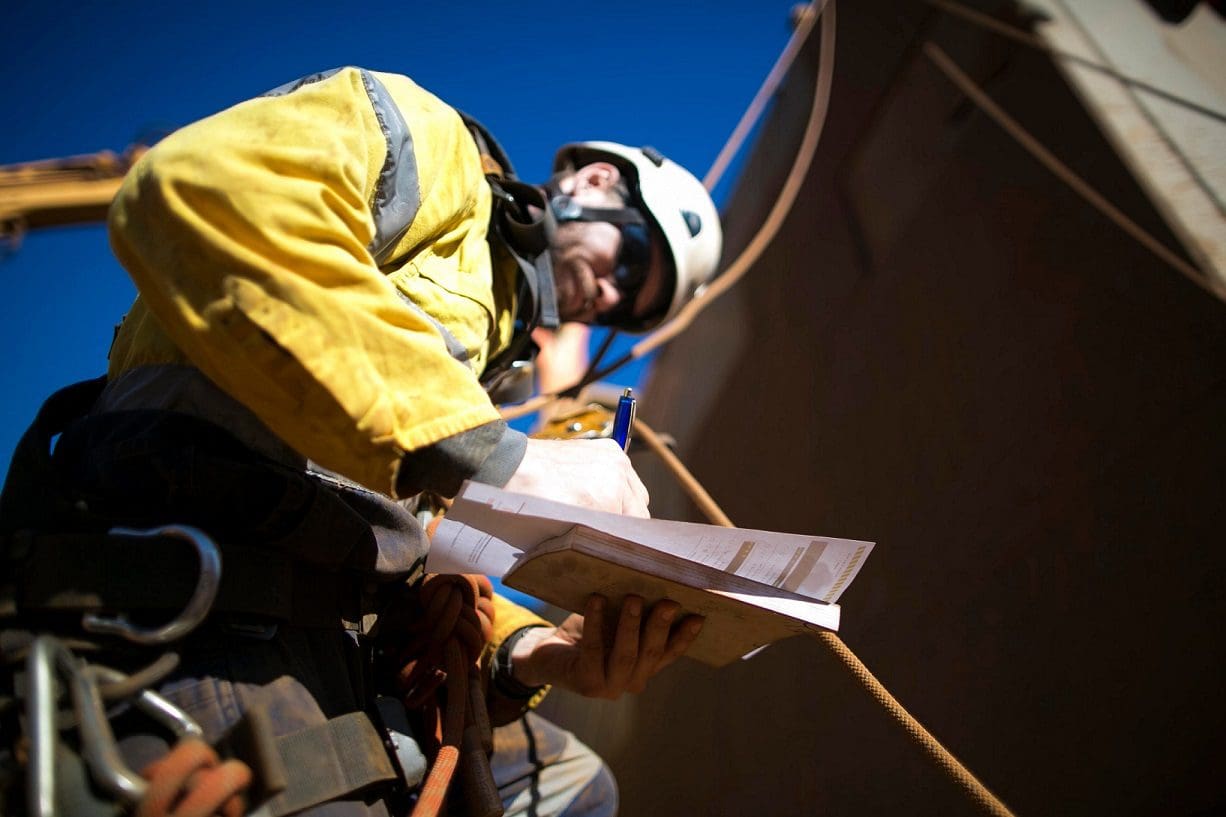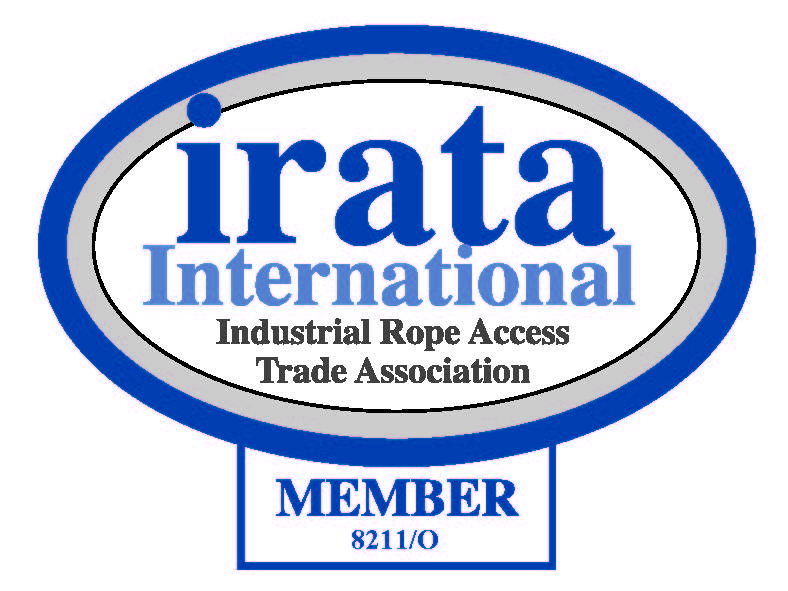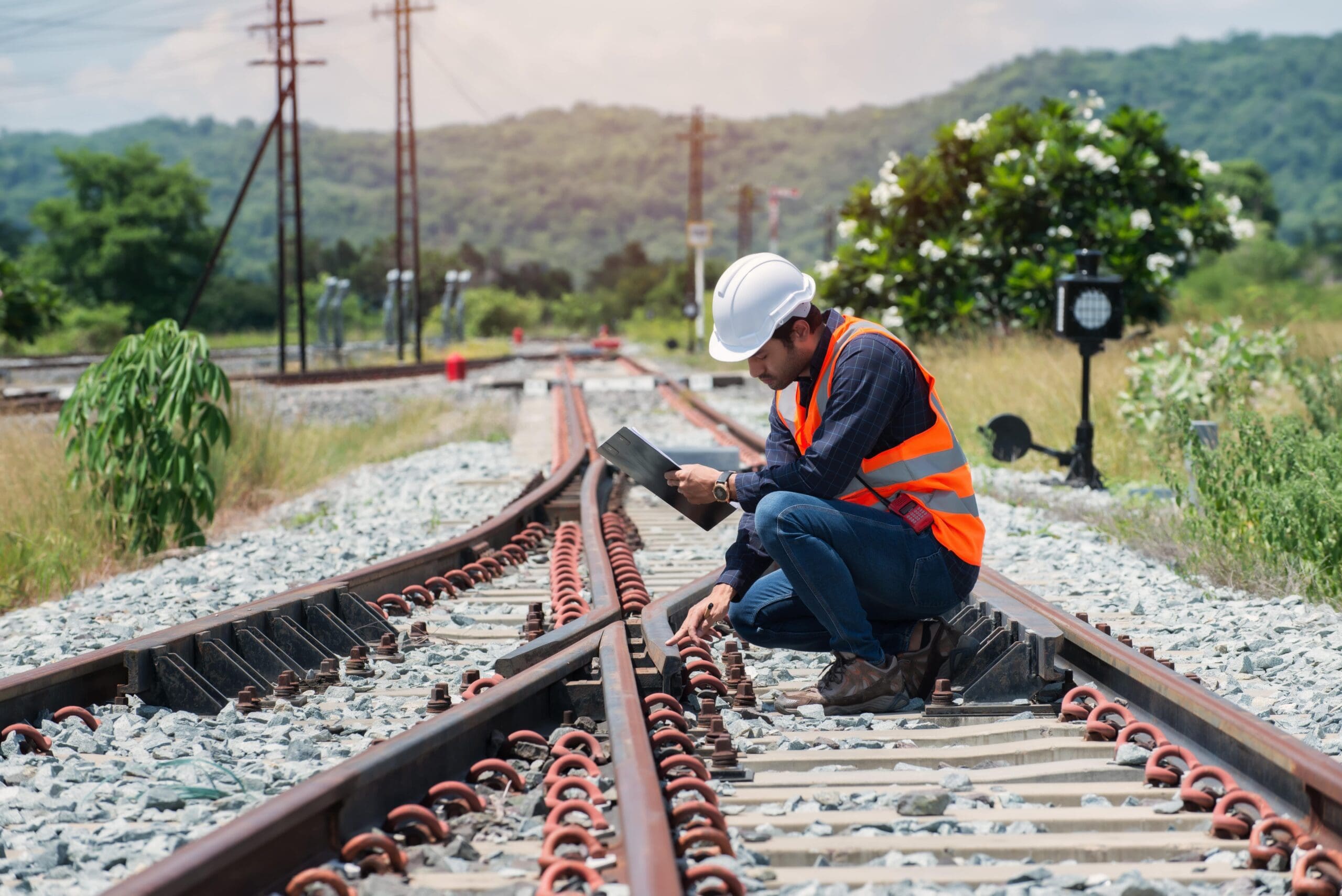Specialist Access Services
Rope Access Inspection and Examination
As infrastructure specialists, we’re proud to provide industry leading Rope Access services, including Emergency Call-out access. We maintain the highest standards for safety and efficiency, especially in remote locations.
Explore how we work
Interested? Let’s talk.
Send us an enquiry
What is Rope Access?
Rope Access is a versatile access method which uses ropes and specialised equipment to reach difficult areas at height. It can be used to assist engineers with Structural Inspections and Surveys, Structural Investigations and Testing, and Specialist Access Support.
Rope equipment is compact and convenient to install, its versatility enables engineers to inspect infrastructure assets situated in difficult environments which may require geotechnical Rope Access. This includes locations impacted by factors such as dense vegetation, substantial heights, water, and remote access.
We provide Rope Access management solutions across various industries such as:
- Railways
- Highways
- Marine and Offshore
- Power and Utilities
At BES Group, we also provide Emergency Call-out Rope Access. We can support you with responsive Rope Access assistance for urgent inspections across crucial infrastructure assets, such as bridges and buildings.

Who we’ve partnered with...





Key benefits
Cost Effective
In comparison to traditional access methods such as scaffolding, Rope Access involves less materials and time to administer.
Versatile Access
Rope equipment is portable, enabling engineers to operate in even the most remote locations. It can also be combined with a Mobile Elevating Platform, also known as a MEWP access platform.
Project Efficiency
Rope Access inspection equipment is quick to install and easy to remove, which reduces the amount of set-up time required and improves project efficiency.
IRATA Qualified
Safe Rope Access is a priority with each inspection, which is why we’re proud to be Level 1, 2 and 3 IRATA qualified. Our advanced Rope Access solutions maintain the highest standards across safety and efficiency.
Let's talk about Rope Access Inspection and Examination
Send one of the team a message
Not seeing what you expected?
Try using our search
Explore what our clients say
What types of infrastructure can you inspect with Rope Access?
This type of access may be used for a variety of inspection services, such as Asbestos Management, Bridge and Structure Monitoring, and general Infrastructure Monitoring. With each inspection survey, we adhere to BS 7985 standards and the IRATA Rope Access International Code of Practice.
Our Inspection Services cover many critical infrastructure assets, including:
- Bridges: Arch, beam and suspension bridges.
- Buildings: High-rise, commercial and industrial buildings.
- Towers: Radio towers, wind turbines and chimneys.
- Other infrastructure: Viaducts, tunnels, oil rigs, pipelines and power lines.

Specialised access methods
Depending on your project requirements, we can also combine additional access methods such as:
Our certified divers and ROVs assess submerged structures, pipelines, and ship hulls using high-resolution imaging, sonar scanning, and non-destructive testing to ensure structural integrity.
Suspended Working Platforms and Marine Safety Access
For elevated access over water or tough terrain, we use suspended platforms, scaffolding, and rope systems, ensuring safe, stable inspections and maintenance per marine safety standards.
Our advanced drones conduct high-resolution aerial inspections of bridges, high-rises, wind turbines, and offshore sites, providing real-time data with minimal disruption while enhancing safety and efficiency.



Our process
Speak to us about the processOur process ensures cost-effective, safe, and precise access to hard-to-reach infrastructure, delivering high-quality results every time.


Let’s talk. Ask us anything.
Send one of the team a message
Why choose BES Group?

800+ expert engineers
Our team of skilled engineers possesses a wealth of expertise.
A legacy of 160+ years of experience
We’re always evolving our approach to future proof our services.

35,000 satisfied customers
A strong reputation for providing exceptional service.

An end-to-end solution
Servicing the full life cycle, from concept through to decommission.
Accredited assurance
Confidence assured with all relevant certifications and accreditations.
Training centre & academies
Our very own internal training academies, ensures high standard.
Frequently asked questions
What is IRATA Rope access?
IRATA stands for Industrial Rope Access Trade Association, it was originally founded in the late 1980’s and is now recognised as the world’s leading authority for industrial Rope Access.
They provide training, certification and continually update policies and procedures to maintain relevancy, safety, and work quality.
IRATA also provides advice to government bodies regarding working at height and health and safety training. Each IRATA Rope Access technician is specially trained and works in line with the highest safety and work practices across the industrial Rope Access industry.
At BES Group we’re proud to work to IRATA guidelines with our Level 1, 2 and 3 certified Rope Access technicians.
What is offshore Rope Access?
Offshore Rope Access involves using industrial rope rigging techniques to reach difficult areas at sea, such as oil rigs and offshore wind turbines.
Rope Access offshore is a preferable access method for inspections conducted in such remote locations, as it allows engineers to access hard-to-reach areas at various heights.
Is Rope Access safe?
At BES Group, we ensure that all rope equipment is thoroughly examined prior to use and conduct thorough health and safety assessments when planning infrastructure access, to maintain the safety of everyone in involved within a project.
All our Rope Access technicians are certified by the leading authority of industrial Rope Access, IRATA. Our strict application of IRATA standards enable us to conduct safe and compliant industrial Rope Access solutions, across various locations and assets.
What does difficult Rope Access mean?
Difficult Rope Access refers to the complexity of the asset or location which requires inspection.
During the initial consultation and planning of your project, we can determine how to safely set-up Rope Access anchor points and conduct an inspection.
Factors which may contribute to difficult Rope Access include:
- Size and scale of infrastructure
- Weather conditions
- Remote locations
- Dense vegetation
- Water Heights
What is BS 7985 standard?
Within the industry, BS 7985 acts as the code of practice which defines the duties placed on employers and employees when operating with advanced Rope Access at height.
It outlines good practice and recommendations for safe use of Rope Access methods such as:
- Equipment checks and maintenance: Ropes, metal equipment and PPE such as helmets needs to be thoroughly inspected before and after usage.
- Certification and traceability: All equipment needs to be marked in the event of a failure so that it can be traced back to the original manufacturer.
- Relevant legislation: Rope Access operatives should follow all relevant legislation such as The Work at Height Regulations 2005.
- Safe operation methods: To ensure safety and compliance, appropriate operation methods need to be applied at every location Rope Access is applied to.
What operations can Rope Access be applied to?
Due to its versatility, Rope Access can be applied to various infrastructure operations which may be difficult to access due to remote location, height, or environmental factors.
This includes operations such as removing vegetation from structures and embankments, cleaning silos and infrastructure monitoring.
The mobility of Rope Access technicians means they can quickly set up, complete tasks, and move between different locations with minimal downtime. Therefore, this is an effective access method for time-sensitive projects.
Is Rope Access an efficient access method?
Rope Access techniques can help streamline projects within the engineering and construction industry.
More complex access methods such as scaffolding, cranes, or On Track Plant (OTP) can often require extensive planning, permits, and disruption to rail services which can extend the time required on a project.
As Rope Access is inherently safer and less invasive than other access methods, it can reduce the need for closing railway lines or highways, which typically requires complex coordination with various stakeholders.
This technique also allows work to conducted within areas where space is limited or access via conventional methods is impractical.
Let's talk about Rope Access Inspection and Examination
Send one of the team a message
Sectors we service
Dive into the diverse landscapes where BES Group sparks innovation and drives impact.


Let’s talk. Ask us anything.
Send one of the team a message
Insights & news
Browse our latest articles
Other similar services...
Looking for something else? Explore similar services...
Let’s get you to the right person, fast.
Thank you, enquiry submitted!
Please check your inbox. We have sent you an email receipt of your enquiry.
We treat every enquiry with the upmost urgency. We’ll aim to get in touch with the relevant BES Group specialist and get back to you as soon as possible*.
Thank you again and have a great day.
 About BES Group
About BES Group Accreditations & Credentials
Accreditations & Credentials Our Environmental, Social & Governance
Our Environmental, Social & Governance Careers at BES Group
Careers at BES Group Our Senior Leadership Team
Our Senior Leadership Team













